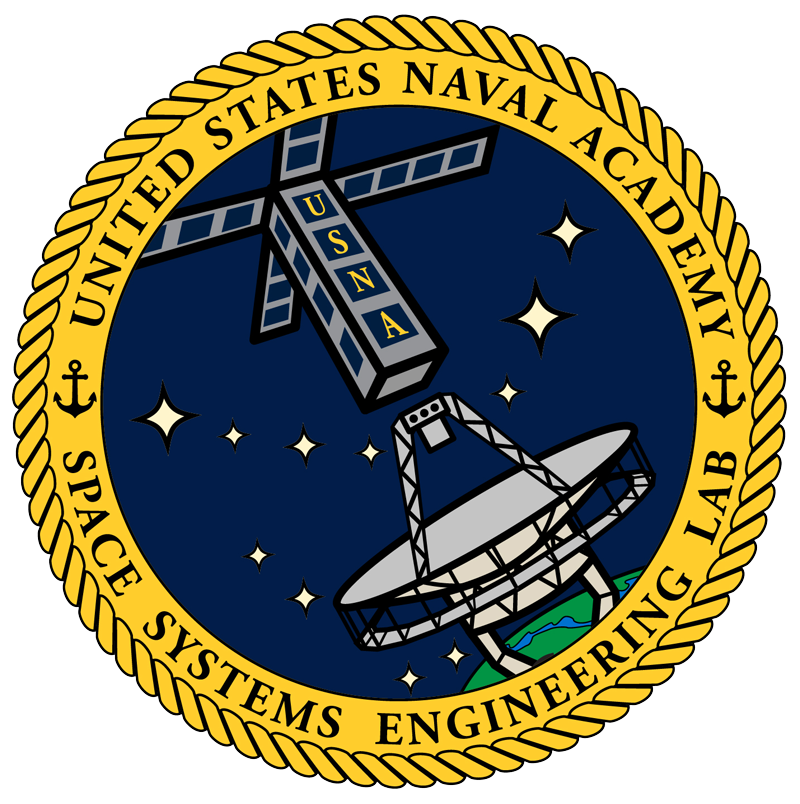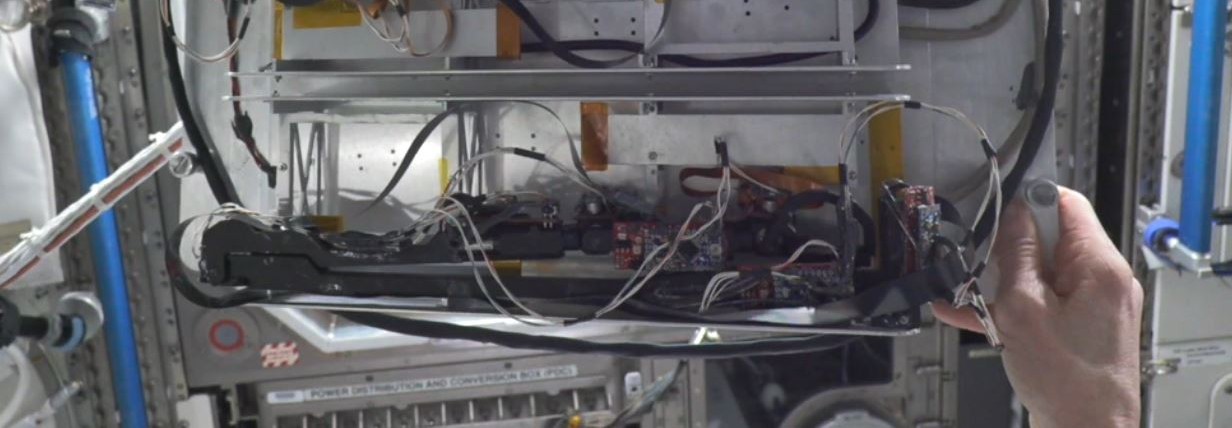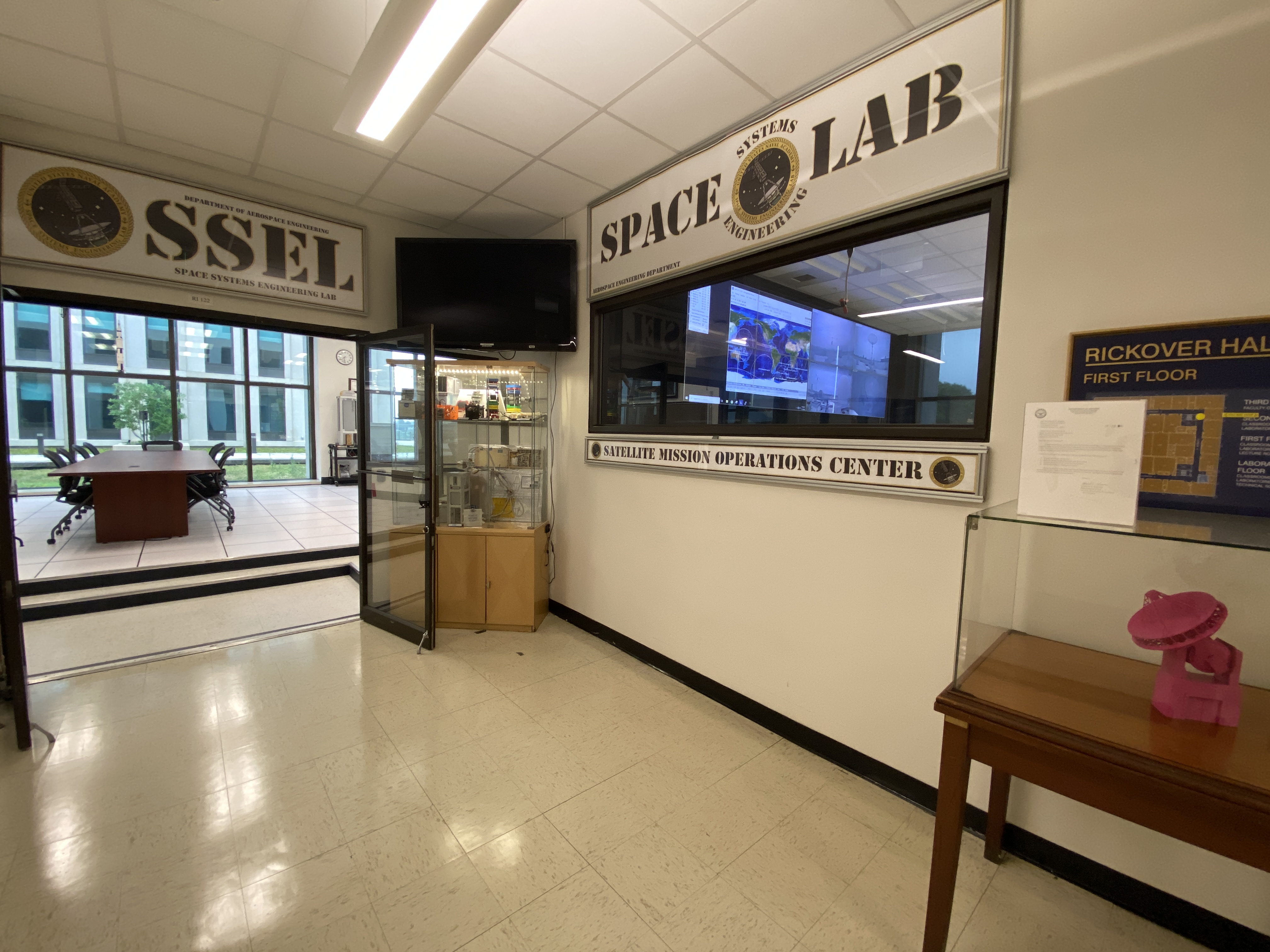
Robotic Repair Satellite (RSat) – conceived, designed, built and operated by USNA midshipmen!
RSat is a prototype 3U-CubeSat that demonstrates the use of a small satellite platform for on-orbit survey and repair of conventional spacecraft. Intended to advance the use of robotic assistance on future space missions.
- RSat has two robotic arms fitted with claws and end-effector cameras to obtain diagnostic information and perform maneuvers, individually or in tandem.
- RSat was delivered to NASA on May 17, 2022 and launched on November 7, 2022 from Wallops Island to the International Space Station as a payload in the Microgravity Science Glovebox.
- Designed to operate while in constant contact with a host spacecraft, RSat was installed in the ISS in January 2024 and and operated by the Midshipmen Satellite Operations team in SSEL until April 22, 2024.
About SSEL
The Naval Academy Space Systems Engineering Lab (SSEL), a 7000-ft2 education/research facility, was founded in 1988 when USNA acquired its Satellite Ground Station (SGS), a 12m parabolic satellite antenna.The antenna was refurbished and used to establish communication links with geostationary satellites and to make contact with spacecrafts. One of the first contacts occurred in 1990, to the Space Shuttle Columbia, mid-mission during Astro-1, via Amateur Radio Packet Transponder. Currently, the SSEL consists of satellite tracking and communication equipment capable of operating in VHF, UHF, S-band frequencies, in addition to the 12 m parabolic antenna operating at higher frequencies.
In 1999, USNA established the Naval Academy Small Satellite Program (NASSP) to actively seek launch opportunities for miniature satellites that were designed, fabricated, tested and operated by midshipmen using two-way communication (transmit and receive). Together, the NASSP and SGS allow the midshipmen to communicate with their own satellites.
With a recent integration of software-defined radio and networked-ground station architecture, SSEL is expanding its capabilities to further support the education and training of midshipmen in satellite operations.
USNA Space Systems Engineering Lab in Rickover Hall
Mission: Midshipmen
The primary mission of SSEL, which houses both the SGS and the NASSP, is to directly support/enhance the project-based technical education of midshipmen, primarily in the Astronautics track of the Aerospace Engineering Department. These midshipmen delve into the theory and practice of space travel outside of the Earth’s atmosphere while participating in advanced laboratory work within the SSEL. Student activities include all aspects of satellite development and operation, and include opportunities to build their own satellites and operate them in space. The SSEL provides exceptional instrumentation and test equipment for their course laboratories, independent research and Capstone projects.
Mission: Faculty, the U.S. Navy, and the Department of Defense
The SSEL supports sponsored research efforts of USNA faculty. Faculty within Engineering & Weapons Division, particularly the Aerospace Engineering Department, use the SSEL for a variety of research activities. Some of these activities include technology development for small satellites and software-defined radio. Current research areas encompass electric and magnetically enhanced propulsion systems, robotics for on-orbit space system construction/repair, active and passive stabilization mechanisms, and satellite docking. The SSEL staff also collaborates with and supports research for a variety of Department of Defense (DoD) and Department of Navy (DON) organizations.
Mission: Aerospace Engineering
The SSEL advances the field of aerospace engineering. SSEL staff are on the cutting edge of hardware and software development for outer space technologies, generating and analyzing high quality test data disseminated through industry publications and conferences. To inspire and engage the next generation of space-focused engineers and scientists, SSEL is committed to supporting STEM (science, technology, engineering and mathematics) outreach and education efforts with: annual participation in the Naval Academy Summer Seminar; representation as a member institution on the Maryland Space Grant Consortium; mentoring and technical consultation for local high school students building CubeSats; satellite qualification testing and satellite tracking for local student groups who launch CubeSats; job-shadowing opportunities.



